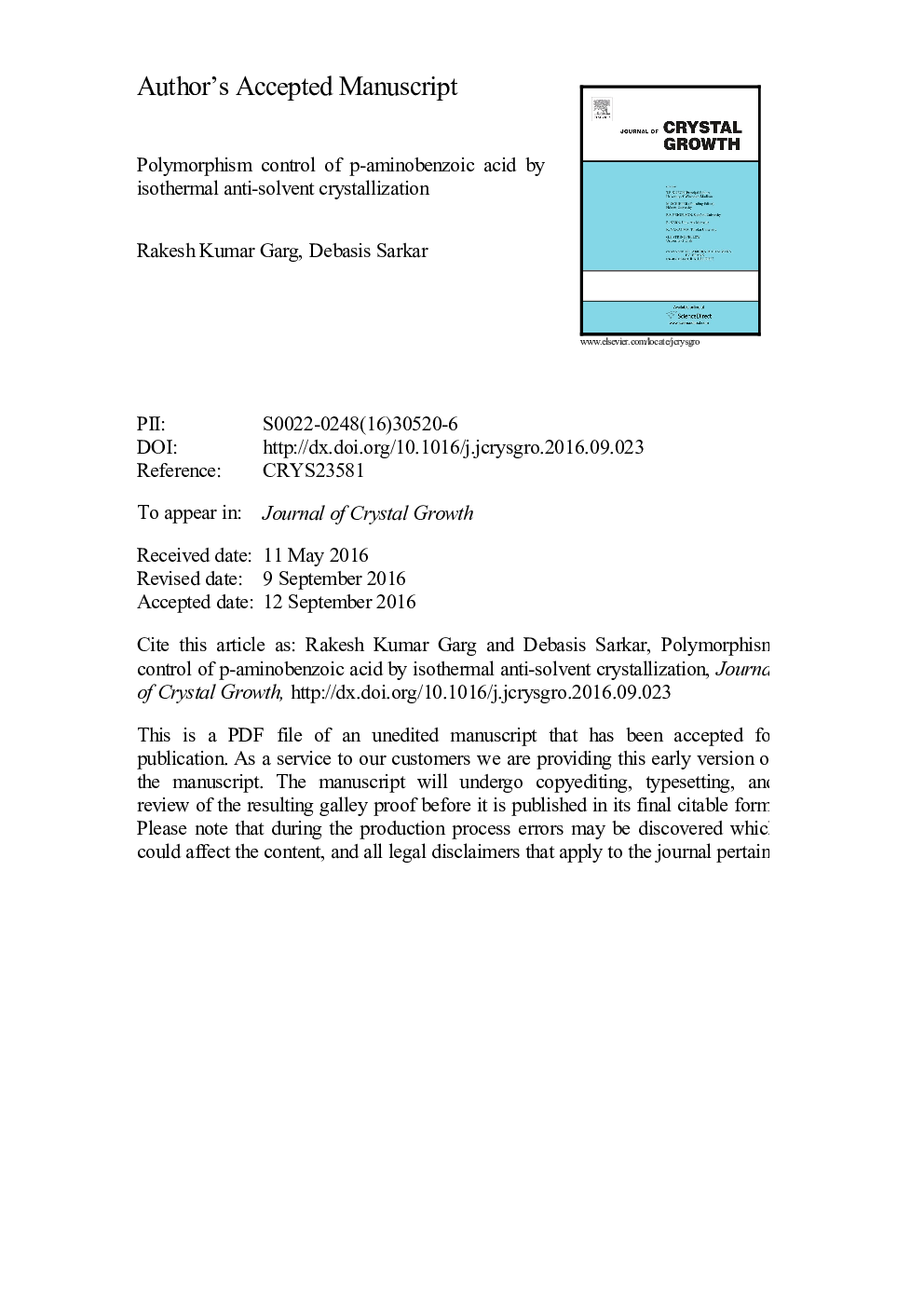| Article ID | Journal | Published Year | Pages | File Type |
|---|---|---|---|---|
| 8149254 | Journal of Crystal Growth | 2016 | 20 Pages |
Abstract
We report, for the first time, the control of polymorphism of p-aminobenzoic acid by isothermal anti-solvent crystallization using ethanol as solvent and water as anti-solvent. p-aminobenzoic (p-ABA) acid crystallizes in two distinct polymorphic forms: the α-polymorph, which is commercially available form and appears as long fibrous needles; and the β-polymorph, which appears in the form of prisms. The solubility of p-ABA was determined gravimetrically for various water/ethanol mixtures at 15 °C and isothermal anti-solvent crystallization experiments were conducted at 15 °C over a range of supersaturation ratio from 1.01 to 1.30 and at different anti-solvent addition rates of 4, 6, 8, and10 ml/h. The needle-type α-polymorph was always obtained at higher supersaturation ratio and higher flow-rates of anti-solvent addition. The prismatic β-polymorph was obtained at lower supersaturation range of 1.01-1.06 when anti-solvent was added at 4 and 6 ml/h. The obtained polymorphs were characterized using scanning electron microscopy, powder x-ray diffraction, and differential scanning calorimetry. The region of occurrence of each polymorph with respect to supersaturation ratio and anti-solvent wt% is presented for these addition rates. The careful selection of supersaturation ratio and anti-solvent addition rate can produce desired polymorph of p-ABA by anti-solvent crystallization.
Related Topics
Physical Sciences and Engineering
Physics and Astronomy
Condensed Matter Physics
Authors
Rakesh Kumar Garg, Debasis Sarkar,
